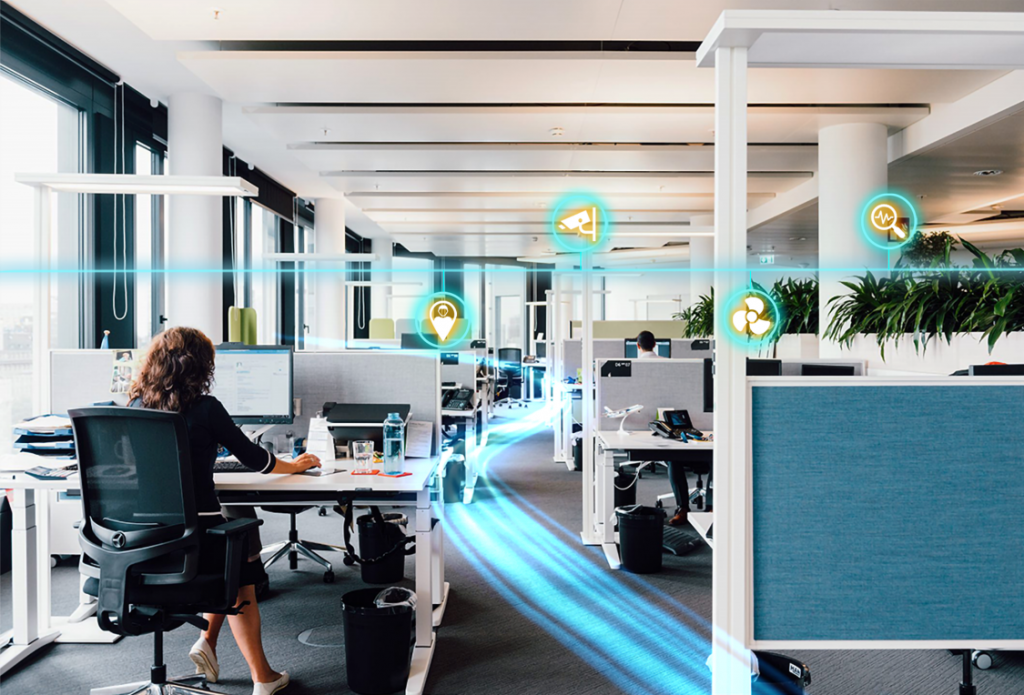Smart Office Building – Smart Office or smart office in Indonesian is a modern technology that really helps office operational activities.
Many large companies have started implementing Smart Office to welcome the current digitalization era. Human activities, especially in terms of work, have integrated various kinds of electronic media, as well as the needs of the internet network.
So there are lots of activities that can be done online that can be done using modern devices such as centralized application systems.
Smart Office or smart office is a combination of smart technology and the Internet of Things implemented in the work environment.
Smart Office is currently growing at a fairly fast pace. Smart Office usually includes a suite of building technology, security, meeting rooms, front desk, and various other office technologies.
For a deeper understanding about Smart Office, therefore in this article we will discuss more deeply what Smart Office is, what are the supporting tools for Smart Office and what are the benefits of the following Smart Office.
Table of Contents
Internet of Things
Smart Office is quite closely related to the Internet of Things, over the past few years IoT in the current digital transformation era is very much needed by businesses in the industrial sector.
More and more businesses can evolve successfully which creates innovation and advanced services as well as integrated and intelligent technology.
Internet of Things is a technology that allows one object to transmit data via a connection without the help of computers and humans.
The history of IoT was first mentioned by a British IT expert Kevin Ashtone who defined technology as the eyes and ears of computers.
Interestingly, IoT was previously mentioned by John Romkey, who first created the world’s first IoT smart device in 1990.
The first IoT device created was a toaster that could be operated via Romkey’s computer.
Internet Of Things Elements
The following are some elements of the supporting technology components for IoT to be able to work optimally.
Artificial Intelligence
Artificial intelligence is one of the most important components in IoT.
By using AI, devices can communicate smartly or automatically according to the program created. Then every IoT device will certainly be equipped with AI which will carry out more complex analytical capabilities, such as managing networks, sending data, developing algorithms that have been made.
With AI, it is possible for IoT to work automatically and independently without a lot of settings or instructions from the user.
Connectivity
Connectivity in IoT is also very supportive of IoT activities to be able to help devices to communicate with each other smoothly.
Connectivity also needs to be true, it must run stable but does not need to use a large load.
Small Size Device
Micro devices or small size devices can increase the flexibility of IoT performance, precision, and scalability.
And also with micro devices can cut the cost of making devices that are getting cheaper.
With the small size of the device it will be easy to use and lighten the burden of the device that is not too heavy.
Sensor
The last IoT element is sensors, sensors are able to change IoT devices that previously used passive systems into active systems and can be integrated with the surrounding environment.
Example of the Internet of Things
IoT has been widely applied in our lives, some of which we may not realize, which is very helpful in daily activities, here are the reviews.
Transportation
IoT in the field of transformation, for example, is autonomous vehicles. Users can run their vehicles, especially cars without holding the steering wheel, aka automatic.
The example of a well-known autonomous vehicle today is Elon Musk’s Tesla, which is famous for its automated driving. In Tesla cars, you will find an auto pilot feature that helps you to drive automatically using AI.
However, this technology is still relatively new, so there are still many shortcomings that will be updated.
Energy Sector
In the field of energy, IoT is able to control pollution, waste of resources, and much more.
An example of IoT in the energy sector can create light sensors that can reduce the use of electrical energy. In addition, IoT is also capable of scheduling on smart home devices such as washing machines, TVs, refrigerators, and microwaves.
Health
The healthcare industry is one of the most suitable fields for implementing IoT. IoT innovations in the health sector can be applied to support the patient’s treatment process so that it can run safely and effectively, for example in measuring blood sugar levels, checking heart rate, being able to do MRI, even surgery.
General Environment
IoT is also often carried out in a general environment, especially in monitoring and managing the surrounding environment in real time, such as monitoring traffic, flooding, water discharge conditions in reservoirs, monitoring sea conditions for disaster mitigation to sailors and fishermen.
Benefits of the Internet of Things
The three benefits of the Internet of Things that we can use in our daily lives include:
Simplify the Connectivity Process
IoT has the benefit of making the connectivity process easier. With a running connection between networks, the IoT system will be more effective and work faster.
Efficiency Achievement
IoT can also increase the efficiency of work and daily activities, where the more types of connections that are created, the less time it takes to get the job done. With IoT, you can increase the efficiency of your activities.
Improving Activity Monitoring Effectiveness
IoT can also help you control and monitor all activities to make it easier. IoT is highly recommended as an alternative activity or job that becomes easier.
Smart Office Building
Creating an office with smart features is indeed very profitable. This is what is called a smart office building. With this smart office, of course, various jobs in the office become easier and can also be controlled in real time. Maybe there are still many who are confused about why smart office or smart building is now a very useful thing.
Smart technology is increasingly being used in all fields to improve our lives. The Internet of Things (IoT) is revolutionizing the way we live and work. A smart office combines smart devices and connectivity solutions to improve productivity, collaboration and space management.
What is Smart Office
What is a smart office? It’s a high-tech workplace that uses analytics and connected technology to help people work more efficiently and productively. In the smart office, analytics are used to understand how the environment can best serve its people and inform better work processes. Connected technologies are used to enable connectivity and collaboration between individuals and teams in the office and remotely.
Smart offices utilize a variety of different technologies and tools. This helps support more productive, smoother and automated work processes. Tools used in smart office buildings can include video conferencing software, meeting room software, desk reservation software, hardware tools, and analytics tools, providing insight into how different spaces are used.
Smart Office Functions
For now, there are still many benefits and functions for implementing smart technology in an office environment. First, it helps increase efficiency and productivity among staff. This is because it makes the task a lot easier. It can also help automate many processes, freeing up people to work on higher-value tasks instead of repetitive and tedious tasks.
This, in turn, allows people within the workspace to achieve their professional goals more quickly and focus on developing higher-level skills, which are suitable for the organizations and individuals who work within them.
For more details, the following are some of the functions and benefits of smart office:
Improve Relationships
As mentioned above, one of the benefits of a smart office is to improve relationships. The relationship in question is a work relationship between one worker and another. With this benefit, work will become easier and can also be done simultaneously even though there is one that WFH (Work From Home) in real time.
Increase Productivity
The next, still related to the functions and benefits of smart office is to increase productivity. Workers who can connect with each other easily will be able to increase their work productivity. Whether it’s an easier job because of a fast internet connection, easy data transfer, and many other things that can enhance a comfortable and fast work experience.
Guaranteed Security
The reason for this is because security devices such as WiFi sensors and security cameras can be combined. The data from this is easily accessible in real-time for those who need it. Additionally, cloud-based solutions can help improve workplace security and compliance as they are managed by specialist companies that invest heavily in security.
Providing More Comfort
Lastly, talk about comfort. Smart offices can make spaces more customizable and comfortable. This is because smart technology can allow staff to control aspects of their work environment, such as temperature control and advanced workspace bookings.
Kinds of Options in Smart Office
Speaking of smart offices, how many options are there to actually make the office you manage or the workspace you manage a smart office? Here are some options in smart office that can make your office more structured.
Modern Video Monitoring
Modern video monitors have wide-angle displays, low-light capabilities, and impressive zoom features. They also allow users to monitor multiple locations at once with split-screen viewing and access from the user’s smartphone or desktop. Images are usually stored in the cloud and can be downloaded to the desktop whenever needed. They are easy to search by date and time.
Indoor Maps
Indoor maps combine GIS (Geographic Information System) data with 3D visualizations to help companies provide the best resident experience for employees, visitors and customers, while managing resources to the maximum.
Voice Control
A smart office system using voice control allows users to control office equipment such as lights, air conditioning, CCTV, etc. via smartphone applications, web pages, and control panels.
Smart Desk
Smart desks can be searched and ordered via online booking platforms. It’s a must-have for offices with sharing desks, hot desks, and hotelling desks. The smart desk booking system not only helps employees find open tables for the day, but also keeps track of who has reserved each space, so employees who are in the building can easily track co-workers (or not, depending on their privacy mode).
Example of Smart Office Building
Are you interested in turning your office into a “Smart Office”? and is there an office that uses smart office technology that is already very well known and also successful?
Some examples of these smart office buildings can be guaranteed to really motivate you to create your own smart office.
The Bullitt Center | Seattle, Washington
Bullitt Center is a commercial office building at the intersection of the Central District, and Capitol Hill neighborhoods, Seattle, Washington.
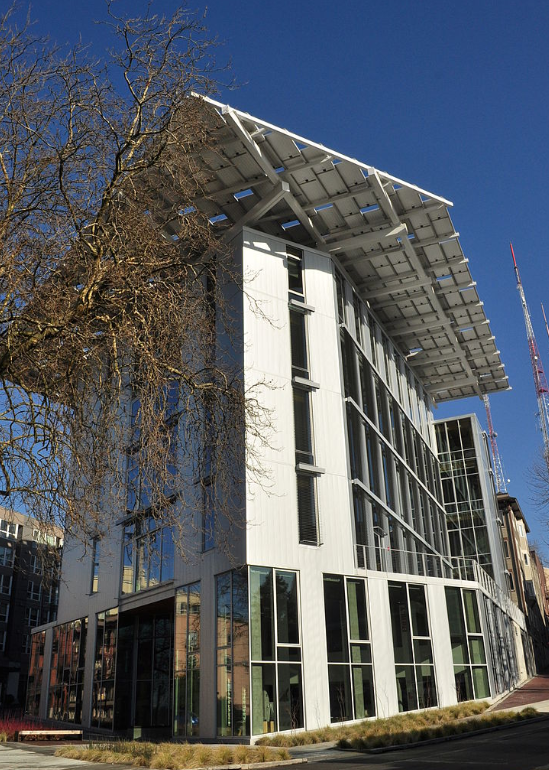
It officially opened on Earth Day, April 22, 2013. The Bullitt Center was designed to be the greenest commercial building in the world, and was certified as a “Living Building” by the International Living Future Institute in April 2015.
RBC Waterpark Place | Toronto, Canada
The Waterpark Place III office is very modern. It has received LEED Core and Shell Platinum ratings. The building has two floors dedicated to high-end retail and dining. The center is equipped with modern furnishings and high-speed WiFi. Your workspace is ready to use from day one.
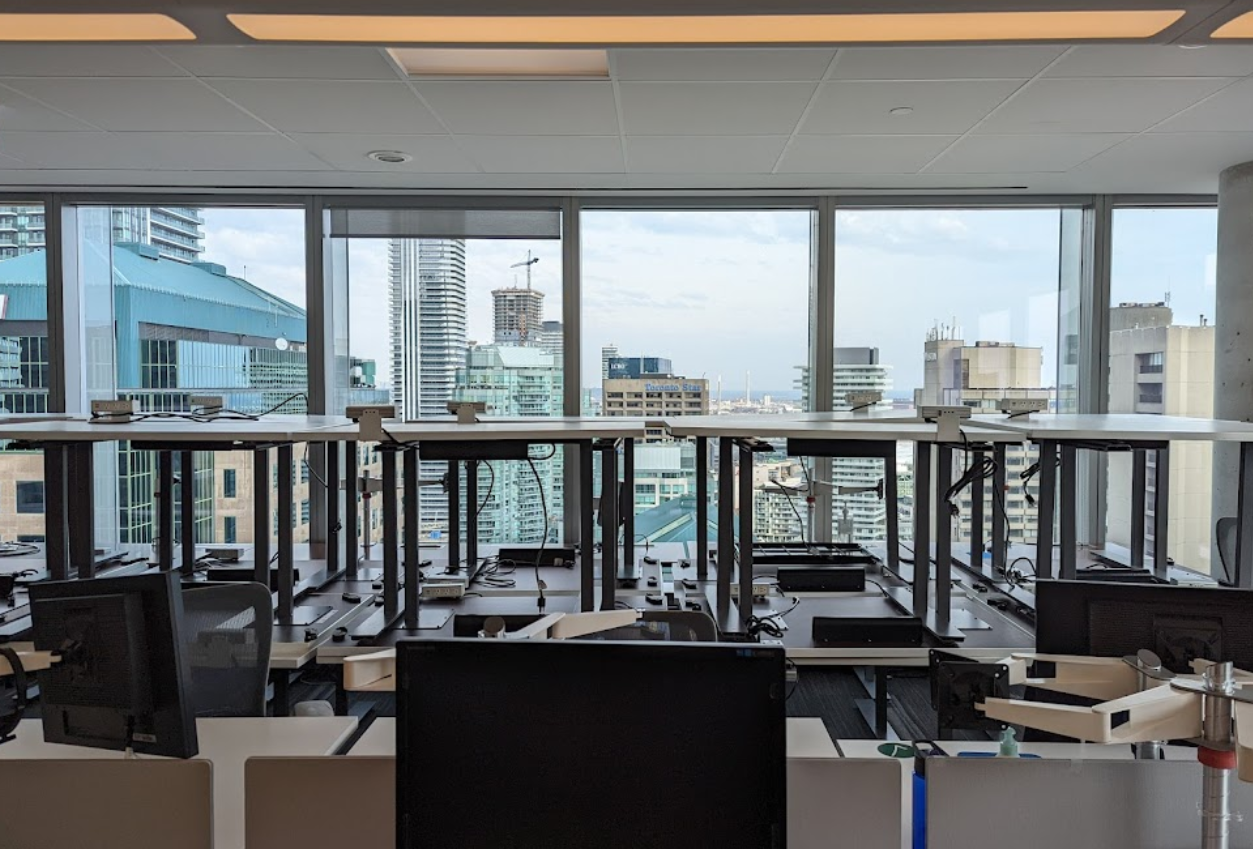
The Waterpark Place business center is located at 88 Queens Quay West. Its office center is on the 25th floor giving you a workspace in one of Toronto’s most prestigious areas.
The Crystal | London, United Kingdom
The Crystal is a very modern building and a unique event venue. Crystal sets the benchmark for modern building design, achieving Outstanding BREEAM accreditation and LEED Platinum accreditation, which are the most stringent standards for sustainable design.
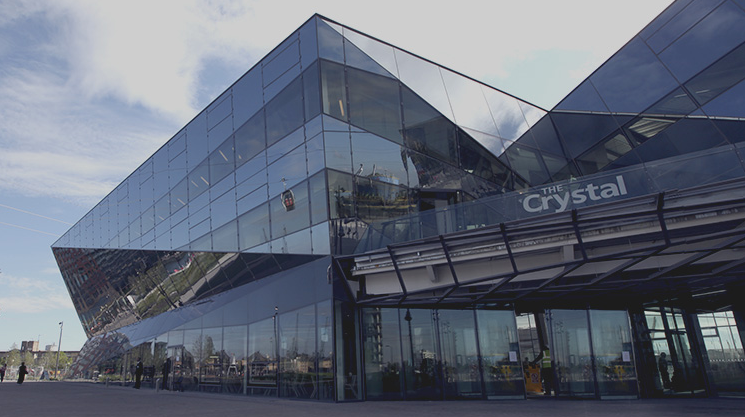
Crystal forms the gateway to Royal Docks, a unique waterfront and thriving home for business and culture in Newham, East London.
Intel SRR3 | Bengaluru, India
Intel Technology India Pvt. Ltd. recently completed construction of Intel’s Sarjapur Ring Road Building 3 (SRR3), a new office building in Bangalore, India. SRR3, located on Intel’s existing campus with more than 3,500 Intel employees, is one of the most unique office buildings on the Intel site.
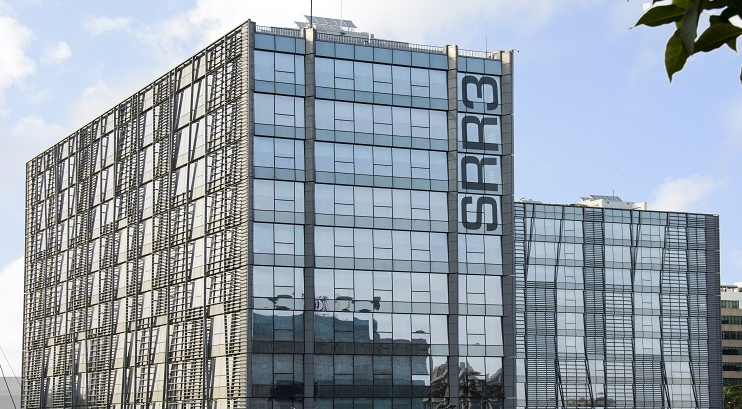
The smart and efficient office now certified LEED Platinum for new construction was designed and built with the help of a small dedicated Intel team.
The Edge | Amsterdam, The Netherlands
Located in the heart of Amsterdam’s Zuidas business district, The Edge is an office building that opens up to the city with its 15-story atrium.
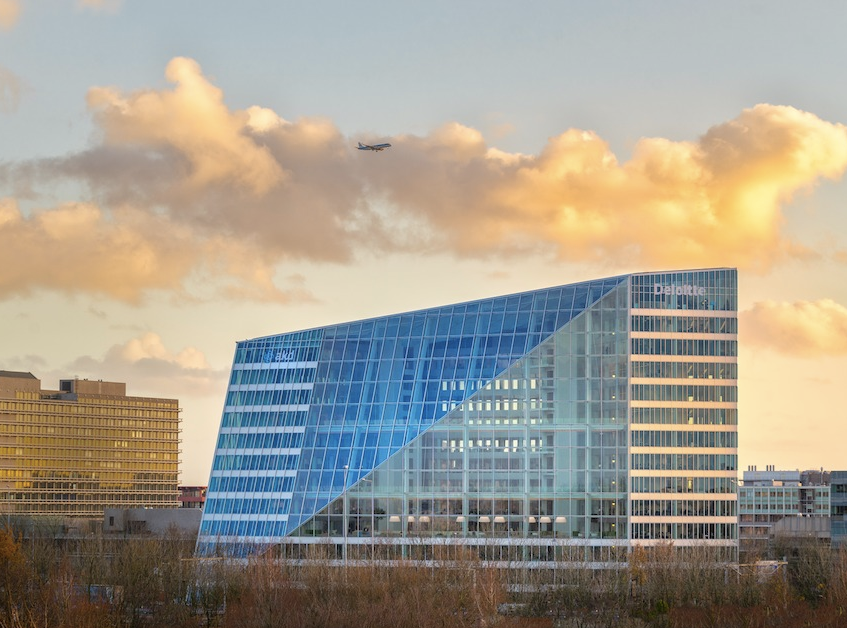
The atrium acts as a window between the world of work and the outside world, and provides the social heart for the building, and serves as an environmental buffer to reduce energy use.
Here are some explanations about smart office building from Netdata, hopefully it will be useful to add insight for you.
![]()

